Reviews
Ilisa Barbash and Lucien Castaing-Taylor
USA, 2009
Credits
Review by Cullen Gallagher
Posted on 28 September 2009
Source
External links
“Agrarian Utopias/Dystopias: The New Nonfiction” by Robert Koehler
Categories The 47th New York Film Festival
Is Sweetgrass even a movie about sheep? Not in the sense that March of the Penguins is about penguins. There’s hardly a frame in Sweetgrass without a specimen of Ovis aries bleating, grazing, or even gazing into the camera, yet the educational and didactic rhetoric that typically characterizes entries in the “animal documentary” genre is noticeably absent. Diverging from the cutesy aesthetics that made Luc Jacquet’s penguin exposé an accessible, international hit, filmmakers Ilisa Barbash and Lucien Castaing-Taylor taken a far more empirical approach. There is no voice-over narration or “talking head” commentary, and until the very end of the movie there are no explanatory intertitles, either. Instead, they have crafted an ambient narrative in the cinéma vérité tradition that demands patient observation from the audience, but also rewards their attentiveness.
Documenting the journey of two sheepherders and their massive flock over the mountains of Montana, the movie is finely attuned to the intense physicality of the undertaking. It is less interested in explaining the conventional 5 W’s and 1 H (who/what/when/where/why and how) than in the imagistic expression of the process from start to finish. An opening pastoral and undeniable adorable sequence of the sheep bathed in nature’s quiet (and the vague hum of a digital camera) is first subtly disturbed by the sound of an approaching ATV, and later shattered by the violent sounds and gestures of the shearing of coats. As though to curb any simplistic political reading, there follows a sequence of shots as the farmers assist with sheep pregnancies and tend to needy babies. This wide array of sights and sounds sets up the complex, interdependent relation between man and animal that will only deepen as the two groups journey together across the Beartooth Mountains.
By withholding key narrative information, Barbash and Castaing-Taylor make Sweetgrass largely an aesthetic experience. And with the predominance of long-takes, there’s a lot of pressure on the directing and editing to both enrapture audiences with the mechanics of the action, and give it enough emotional weight to keep viewers interested. The few scenes where the herders break silence to crack jokes or let down their guard and expose their own anxieties and uncertainties humanize them beyond the monotony of their actions, but the bulk of audience response still relies on the extent to which the filmmakers can transform the raw material of their subject beyond the expository and into something cinematic.
En masse, the sheep constitute a massive screen presence. No exact number is given, but there must be hundreds (at least). It’s a constant struggle for the herders on horseback and their dogs to keep the flock together and in-line. And even when they do, the herd repeatedly spills out of the frame into the infinite unknown of off-screen space. The longest of shots can’t contain the sheer enormity of the herd. The clamorous, thunderous cacophony of their collective bleating is an atonal, dissonant wave. Some scream, some bellow, others sing, mumble, whine, screech, whisper, growl, and moan in all manners high, low, guttural, pinched and nasal: no two “baas” are alike. Luis Buñuel may make satiric use of them at the end of The Exterminating Angel to comment on the herd-mentality of his characters, but there is no denying that the sheep of Sweetgrass completely dominate both the image and soundtrack with little room to spare.
The detail-oriented direction is largely successful. There’s something of Robert Flaherty’s particularity in the film, but without his fact-bending (or breaking) idealism. Sheep can be genuinely funny, and the herders’ frustrations are equally empathetic and amusing. (One moment in particular comes to mind: the sound of one of the herder’s long stream of sheep-directed profanity is juxtaposed with an extreme long-shot of him trying to direct the sheep over a mountain, the expansive landscape littered with woolen creatures highlighting the seeming futility of the mission.) As the film progress, however, the humor lessens and a sense of elegiac tragedy takes its place. The film’s final intertitles reveal that this centuries-old tradition is dying out, rewriting the preceding footage in light of this new information. In CinemaScope, Robert Koehler writes of the film’s “overwhelming sadness at the process of collapse and the end of things, alongside the unspoken drama of human beings stuck in a cycle with no escape. The politics is therefore immensely angry, and more forceful due to the filmmakers/recordists’ refusal to announce their anger in literal means.” I see less anger and more appreciation and awareness. Barbash and Castaing-Taylor don’t so much fight the passage of time as they do pay tribute to, and thus preserve, a tremendous art.
More The 47th New York Film Festival
-
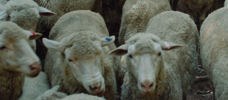
Sweetgrass
2009 -
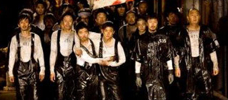
Kanikosen
2009 -

Police, Adjective
2009 -
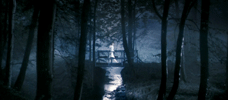
Antichrist
2009 -
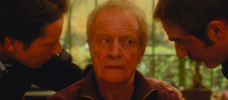
Wild Grass
2009 -
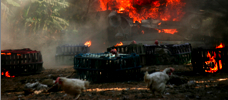
Lebanon
2009 -
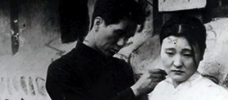
Crossroads of Youth
1934 -
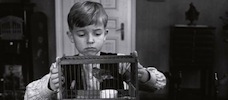
The White Ribbon
2009 -

Mother
2009 -

Min Ye
2009 -

The Art of the Steal
2009 -

In Comparison
2009
We don’t do comments anymore, but you may contact us here or find us on Twitter or Facebook.



